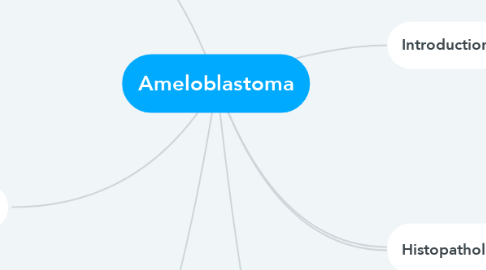Ameloblastoma
by Krishnapriya Umashankar


1. Classification
1.1. Follicular, plexiform, acanthomatous, basal cell type, desmoplastic, granular cell
1.2. Central and peripheral
2. Clinical features
2.1. Ameloblastoma grow slowly and usually are asymptomatic until a swelling is noticed. Most patients thus typically present with a complaint of swelling and facial asymmetry. Occasionally, small tumors may be identified on routine radiography. As the tumor enlarges, it forms a hard swelling and later may cause thinning of the cortical bone resulting in an egg shell crackling which can be elicited. The slow growth also allows for reactive bone formation leading to gross enlargement and distortion of the jaw. If the tumor is neglected, it may perforate the bone and spread into the soft tissues making excision extremely difficult.
2.2. Peripheral ameloblastoma usually presents as normal colored, smooth surfaced nodules or enlargements but occasional tumors may present with erythematous or papillary surface. They are slow growing and cause little or no bone erosion. Any saucerisation of the underlying bone is due to pressure rather than invasion
2.3. Painhas been reported as an occasional finding which could be attributed to secondary infection. Other effects include tooth mobility, displacement of teeth, resorption of roots, paraesthesia if the inferior alveolar canal is involved, failure of eruption of teeth and very rarely the ameloblastoma can ulcerate through the mucosa
3. Treatment
3.1. Marginal or en bloc resection
4. Introduction
4.1. True odontogenic tumor of enamel organ type tissue which has not undergone any differentiation at the time of enamel formation
4.1.1. Robinson has defined it as: Unicentric, nonfunctional, intermittent in growth, anatomically benign and clinically persistent.

